Abstract
This paper describes the induction of delayed-type hypersensitivity (DH) in the mouse and guinea-pig to haptenated liposomes. The tripeptide-enlarged hapten 3-(p-azobenzenearsonate)-N-acetyl-L-tyrosylglycylglycine (A) was coupled to phosphatidylethanolamine (PE) and incorporated into liposomal membranes (A-PE-liposomes). In mice DH was measured as footpad swelling and in guinea pigs by skin testing. To induce hapten A-specific DH in mice with A-PE-liposomes the application of the cationic, surface-active lipid, dimethyl dioctadecyl ammonium bromide (DDA) was necessary. The use of Freund's complete adjuvant (FCA) did not result in the induction of DH to hapten A. In guinea-pigs, however, FCA and DDA had equally good adjuvant properties in the induction of DH. The time course of the DH and the optimal time interval between immunization and elicitation were determined for the mouse system. Also, the effect of dose and epitope density was studied in that system. Cyclophosphamide treatment, before immunizing mice with A-PE-liposomes and DDA, resulted in greatly impaired DH, probably caused by the short lifetime of the integrity of liposomes after intracutaneous administration to mice. The results make it very likely that presentation of hapten A in a liposomal or micellar structure is required to induce a cellular immune response to this hapten in mice.
Full text
PDF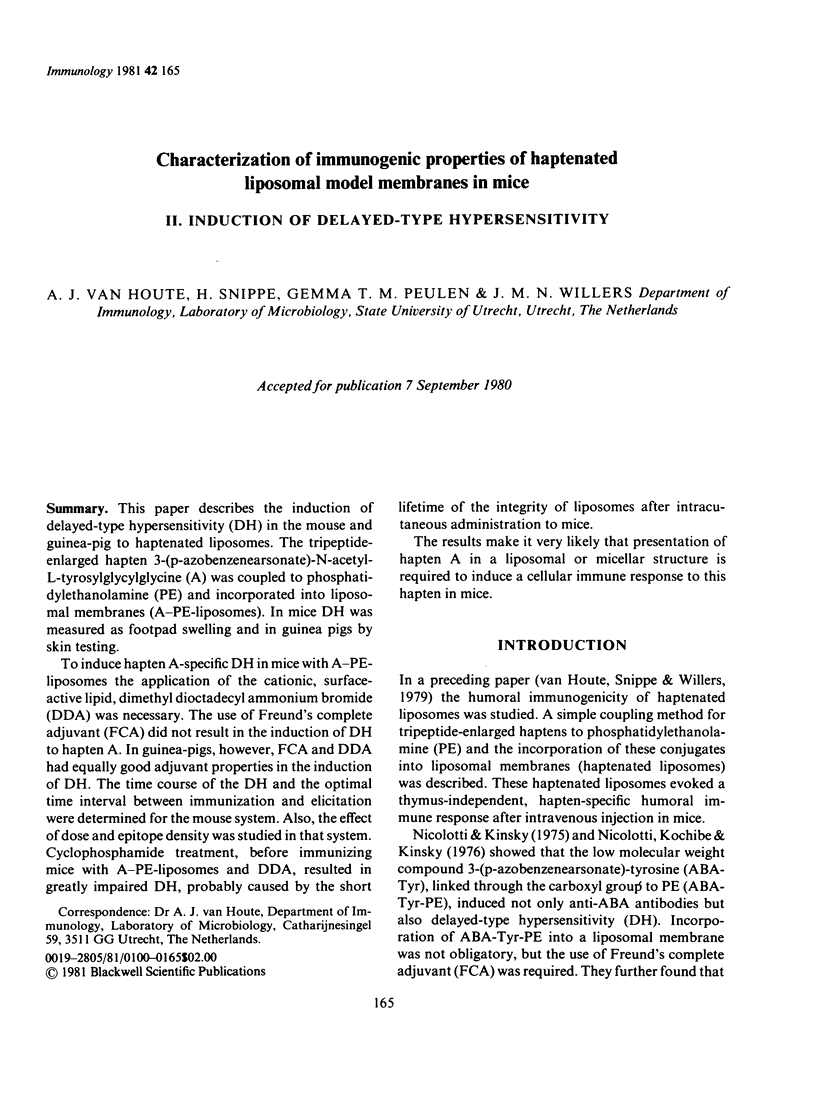
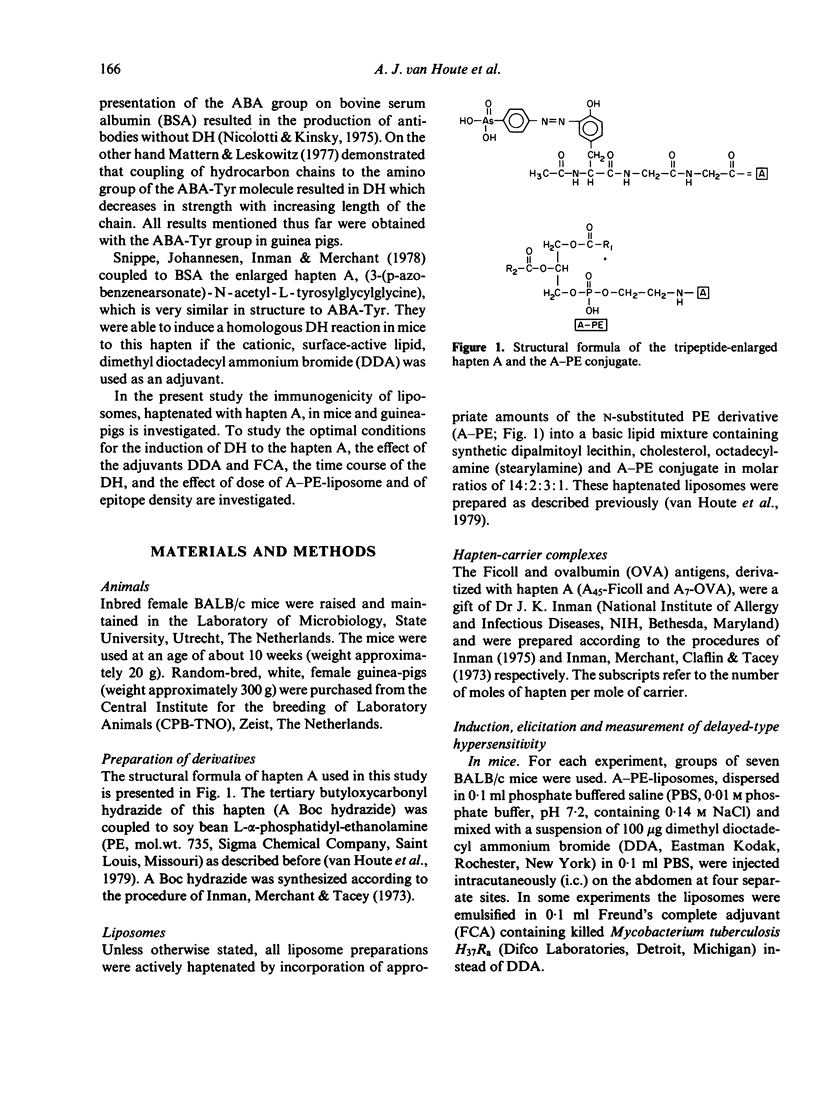
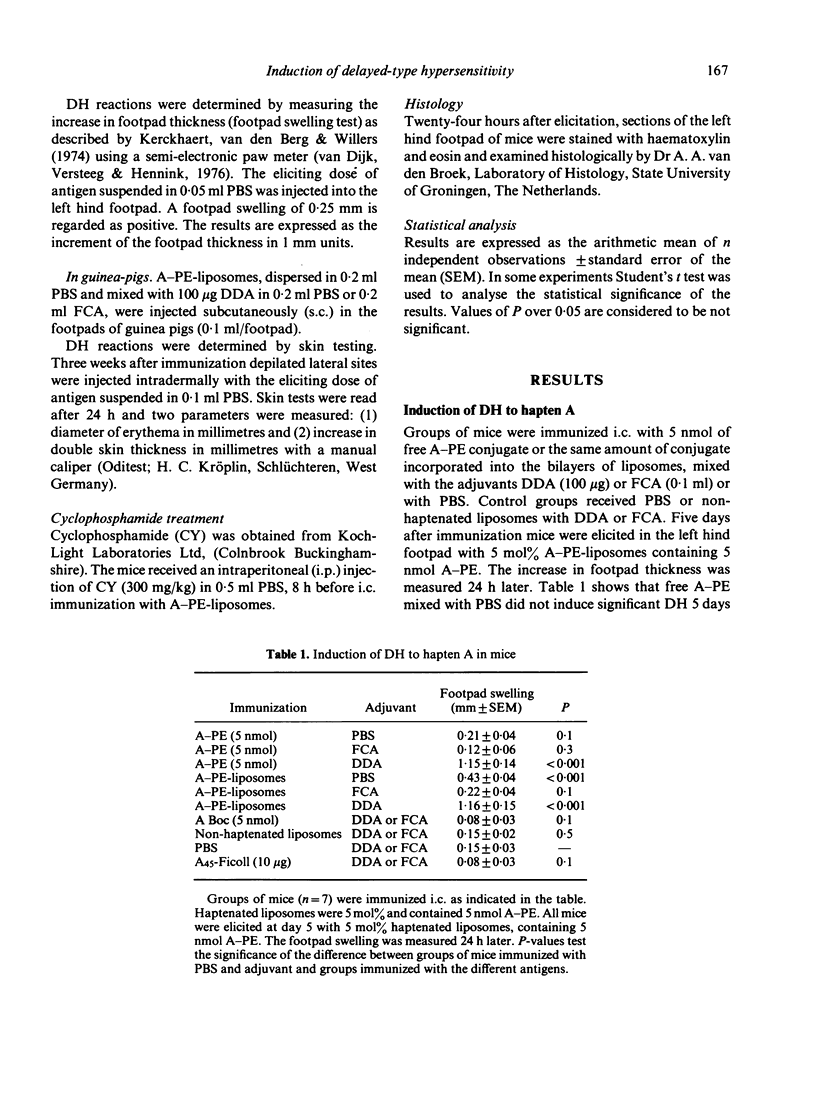
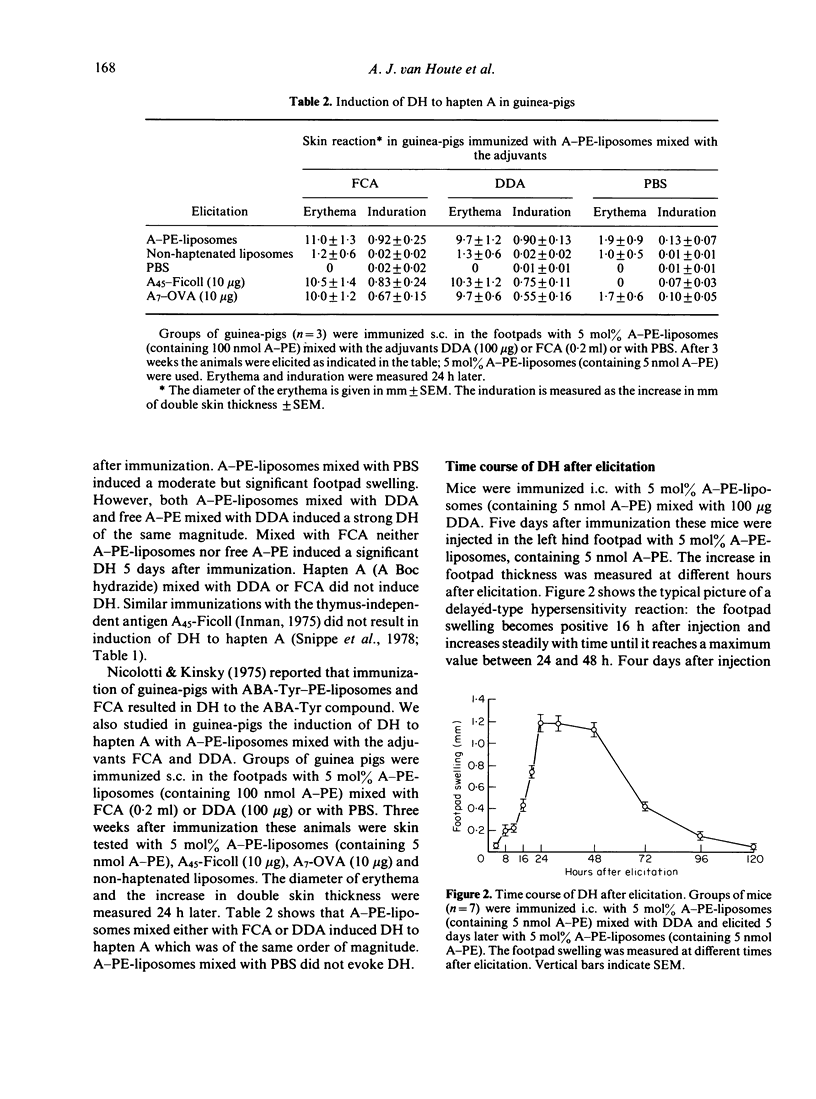
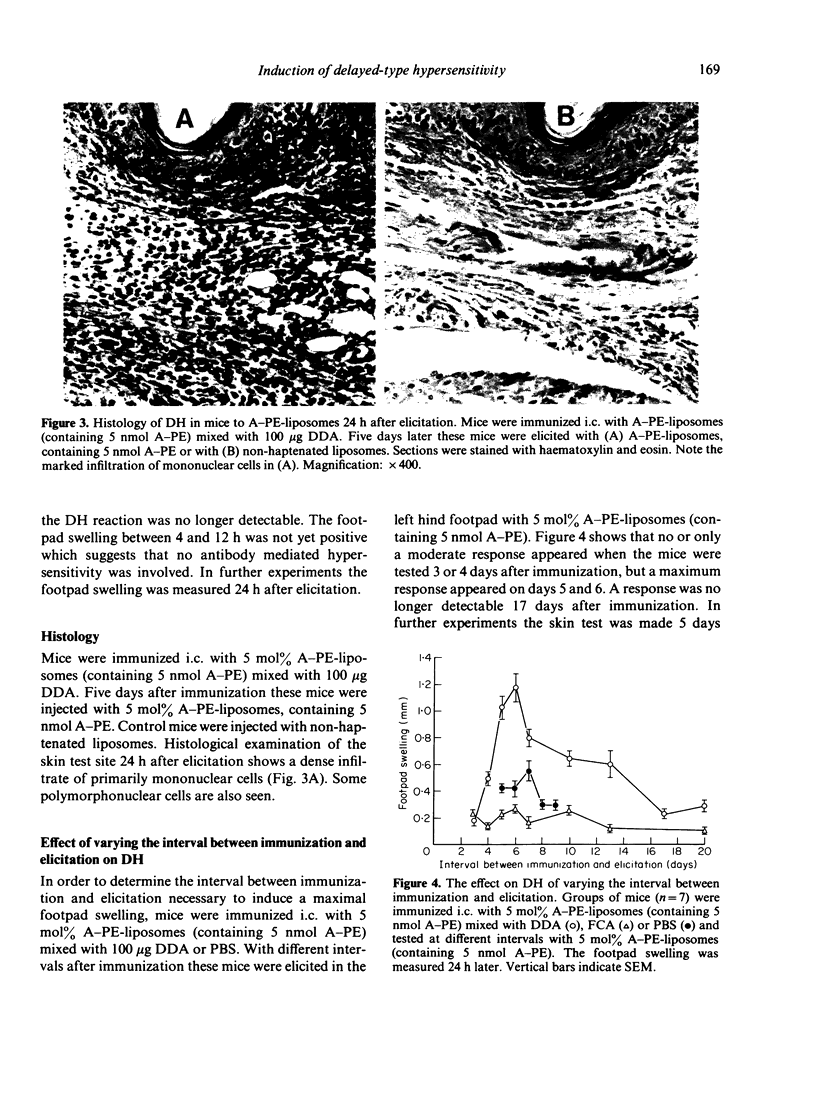
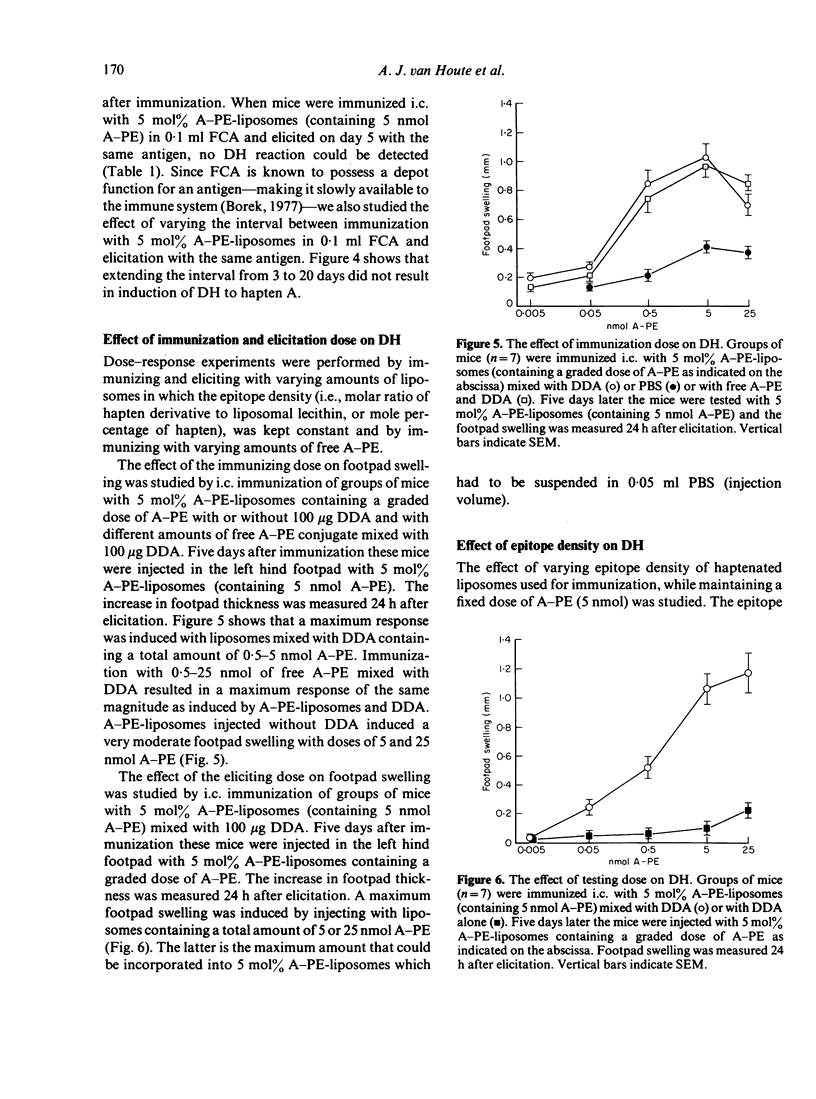
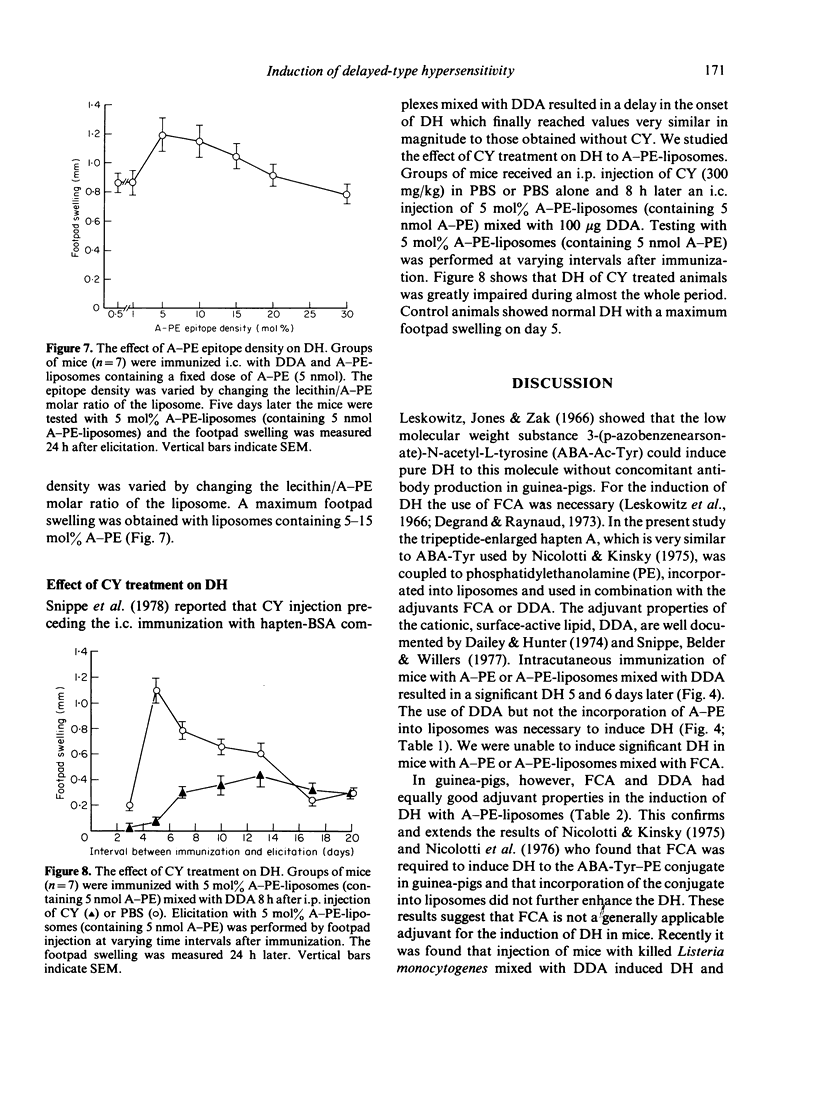
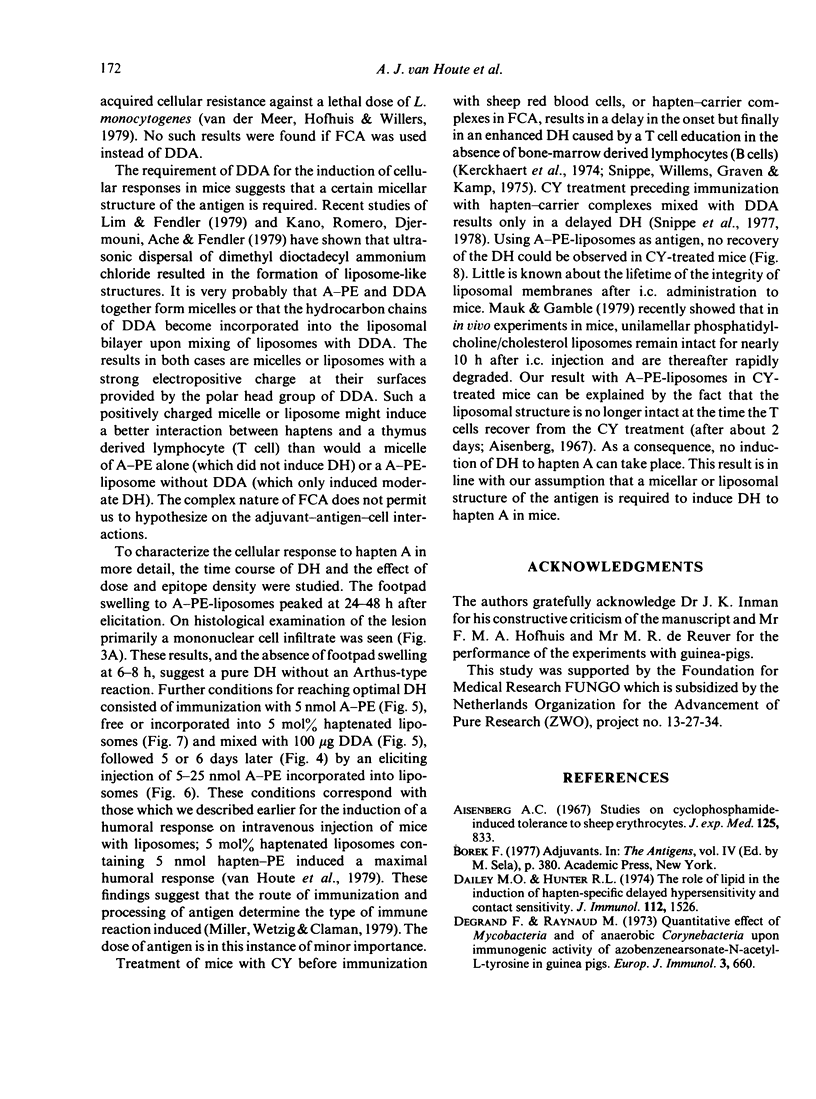
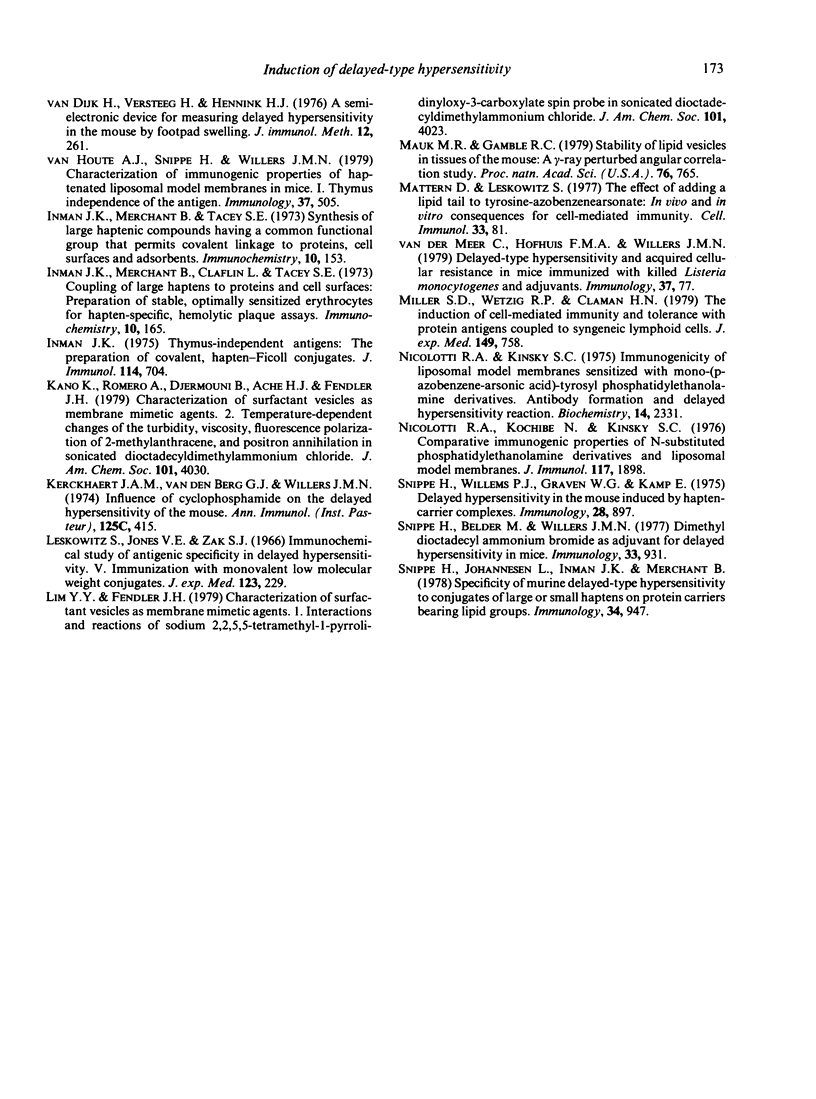
Images in this article
Selected References
These references are in PubMed. This may not be the complete list of references from this article.
- Aisenberg A. C. Studies on cyclophosphamide-induced tolerance to sheep erythrocytes. J Exp Med. 1967 May 1;125(5):833–845. doi: 10.1084/jem.125.5.833. [DOI] [PMC free article] [PubMed] [Google Scholar]
- Dailey M. O., Hunter R. L. The role of lipid in the induction of hapten-specific delayed hypersensitivity and contact sensitivity. J Immunol. 1974 Apr;112(4):1526–1534. [PubMed] [Google Scholar]
- Degrand F., Raynaud M. Quantitative effect of Mycobacteria and of anaerobic Corynebacteria upon immunogenic activity of azobenzearsonate-N-acetyl-L-tyrosine in guinea pigs. Eur J Immunol. 1973 Oct;3(10):660–661. doi: 10.1002/eji.1830031016. [DOI] [PubMed] [Google Scholar]
- Inman J. K., Merchant B., Claflin L., Tacey S. E. Coupling of large haptens to proteins and cell surfaces: preparation of stable, optimally sensitized erythrocytes for hapten-specific, hemolytic plaque assays. Immunochemistry. 1973 Mar;10(3):165–174. doi: 10.1016/0019-2791(73)90005-0. [DOI] [PubMed] [Google Scholar]
- Inman J. K., Merchant B., Tacey S. E. Synthesis of large haptenic compounds having a common functional group that permits covalent linkage to proteins, cell surfaces, and adsorbents. Immunochemistry. 1973 Mar;10(3):153–163. doi: 10.1016/0019-2791(73)90004-9. [DOI] [PubMed] [Google Scholar]
- Inman J. K. Thymus-independent antigens: the preparation of covalent, hapten-ficoll conjugates. J Immunol. 1975 Feb;114(2 Pt 1):704–709. [PubMed] [Google Scholar]
- Kerckhaert J. A., Van den Berg G. J., Willers J. M. Influence of cyclophosphamide on the delayed hypersensitivity of the mouse. Ann Immunol (Paris) 1974 Mar-Apr;125(3):415–426. [PubMed] [Google Scholar]
- Leskowitz S., Jones V. E., Zak S. J. Immunochemical study of antigenic specificity in delayed hypersensitivity. V. Immunization with monovalent low molecular weight conjugates. J Exp Med. 1966 Feb 1;123(2):229–237. doi: 10.1084/jem.123.2.229. [DOI] [PMC free article] [PubMed] [Google Scholar]
- Mattern D., Leskowitz S. The effect of adding a lipid tail to tyrosine-azobenzenearsonate: in vivo and in vitro consequences for cell-mediated immunity. Cell Immunol. 1977 Sep;33(1):81–91. doi: 10.1016/0008-8749(77)90136-8. [DOI] [PubMed] [Google Scholar]
- Mauk M. R., Gamble R. C. Stability of lipid vesicles in tissues of the mouse: a gamma-ray perturbed angular correlation study. Proc Natl Acad Sci U S A. 1979 Feb;76(2):765–769. doi: 10.1073/pnas.76.2.765. [DOI] [PMC free article] [PubMed] [Google Scholar]
- Miller S. D., Wetzig R. P., Claman H. N. The induction of cell-mediated immunity and tolerance with protein antigens coupled to syngeneic lymphoid cells. J Exp Med. 1979 Mar 1;149(3):758–773. doi: 10.1084/jem.149.3.758. [DOI] [PMC free article] [PubMed] [Google Scholar]
- Nicolotti R. A., Kinsky S. C. Immunogenicity of liposomal model membranes sensitized with mono(p-azobenzenearsonic acid)tyrosylphosphatidylethanolamine derivatives. Antibody formation and delayed hypersensitivity reaction. Biochemistry. 1975 Jun 3;14(11):2331–2337. doi: 10.1021/bi00682a009. [DOI] [PubMed] [Google Scholar]
- Nicolotti R. A., Kochibe N., Kinsky S. C. Comparative immunogenic properties of N-substituted phosphatidylethanolamine derivatives and liposomal model membranes. J Immunol. 1976 Nov;117(5 PT2):1898–1902. [PubMed] [Google Scholar]
- Snippe H., Belder M., Willers J. M. Dimethyl diotadecyl ammonium bromide as adjuvant for delayed hypersensitivity in mice. Immunology. 1977 Dec;33(6):931–936. [PMC free article] [PubMed] [Google Scholar]
- Snippe H., Johannesen L., Inman J. K., Merchant B. Specificity of murine delayed-type hypersensitivity to conjugates of large or small haptens on protein carriers bearing lipid groups. Immunology. 1978 May;34(5):947–954. [PMC free article] [PubMed] [Google Scholar]
- Snippe H., Willems P. J., Graven W. G., Kamp E. Delayed hypersensitivity in the mouse induced by hapten-carrier complexes. Immunology. 1975 May;28(5):897–907. [PMC free article] [PubMed] [Google Scholar]
- Van Dijk H., Versteeg H., Hennink H. J. A semi-electronic device for measuring delayed hypersensitivity in the mouse by footpad swelling. J Immunol Methods. 1976;12(3-4):261–265. doi: 10.1016/0022-1759(76)90047-8. [DOI] [PubMed] [Google Scholar]
- van Houte A. J., Snippe H., Willers J. M. Characterization of immunogenic properties of haptenated liposomal model membranes in mice. I. Thymus independence of the antigen. Immunology. 1979 Jun;37(2):505–514. [PMC free article] [PubMed] [Google Scholar]



